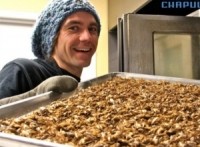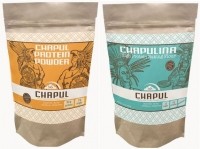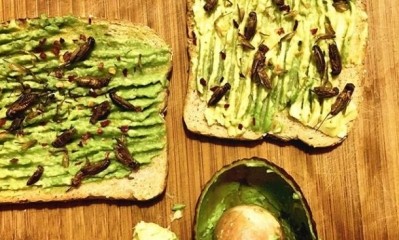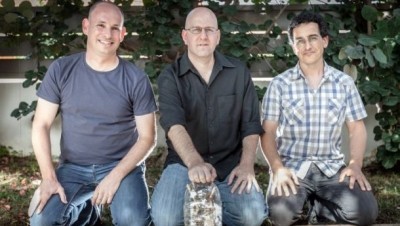Chapul cricket protein bars should be in 3-4,000 stores by end of year, predicts founder
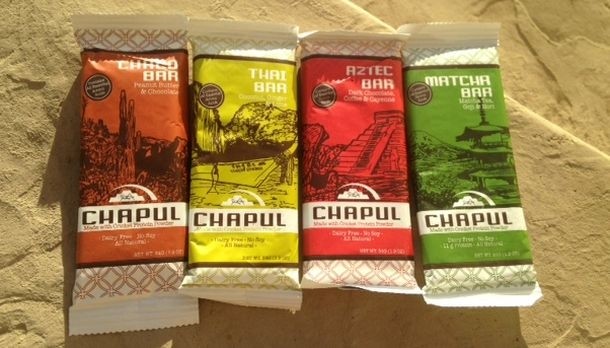
“We’re going into UNFI and Nature’s Best warehouses nationwide, so 2016 is going to be a huge year for us.”
Although edible insects are still a niche market in the US, the long-term potential is significant, says Crowley, who says the steady stream of new market entrants over the past two years has given farmers and processors the confidence to invest in the infrastructure that’s needed to drive efficiency.
And while the entry of a top-tier food company into the category could prove a game-changer, predicts Crowley (who first launched his cricket protein bars in 2012 online and in the natural retail channel), the market will continue to grow with or without the participation of a major CPG brand.
“Larger food companies are losing market share to smaller companies like us, so I don’t think it will take a General Mills or a Kellogg to develop a product containing insects in order to validate this category.”
We’ve been approached by several big food companies interested in monitoring the edible insects landscape
Indeed, big food brands are more likely to buy a company that has already built traction in this space via a brand that resonates with consumers, than to try and create one from scratch, he predicts, despite the fact that the R&D teams at all of the leading food companies have been experimenting with cricket powders for some time.
So has Chapul been wooed by any large food companies?
“No one has offered to buy us outright,” Crowley reveals. “But we’ve been approached by several companies who are all very interested in monitoring the landscape in this space and want to get the inside scoop.”
While it might seem gimmicky, cricket powder ticks all the right boxes when it comes to nutrition and sustainability. It’s low in fat but high in protein (60-70%), packed with calcium, iron, and vitamin B12, and greener than many rival protein sources, as crickets are super-efficient at converting feed into food, require less land and water than cattle or pigs, and emit fewer greenhouse gases (according to a 2013 report from the Food and Agriculture Organization of the UN).
What we did was totally contrary to all business theory, but we did it anyway
As to what is driving Chapul’s growth, the novelty factor of selling bugs clearly drives trial, but it doesn’t drive repeat purchases, he observes. “People come back to us because they love the taste of the products and the great nutritional profile [crickets are low in fat but high in protein (60-70%) and packed with calcium, iron, and vitamin B12].”
That said, the sheer novelty of his bug-laced wares generated a ton of free PR in the early days, while a 2014 appearance on Shark Tank (which helped Chapul secure an investment from Dallas Mavericks owner Mark Cuban) generated publicity that most start-ups can only dream about.
“The infrastructure [for insect ingredients for human consumption] didn’t exist [in the USA] when we started, so we had to create consumer demand and hope that it would exert a pull-through effect throughout the supply chain,” recalls Crowley.
“That’s totally contrary to all business theory, which basically says don’t launch a product that there is no consumer demand for, and don’t launch a product that there is no supply chain for, but we were a mission-driven company and we just went ahead and did it anyway.”
Chapul is launching two new products this year (check out the website for details): High-protein Baking Flour (which can be substituted for regular flour on a 1:1 basis as it contains a range of ingredients as well as cricket powder, including sorghum flour and garbanzo bean flour); and Cricket Protein Powder, which only has one ingredient (milled crickets) and is ideal for boosting the protein content of baked goods, smoothies, or bars.
Rising consumer awareness
Since 2012, the landscape has changed considerably, says Crowley, who says Millennials are very willing to try new things, and that his job isn’t to persuade people that are grossed out by the thought of eating bugs, but to entice those that are open to it, but have never tried them.
“When we started doing instore demos in 2012, nine out of 10 people had never heard of edible insects, whereas today that’s totally flipped, nine out of 10 people we talk to in natural food stores have at least heard something about it, and we get very detailed questions about sustainable proteins, the food source for the insects, and so on.”
As for the supply chain, crickets are generally raised for 6-8 weeks and then frozen. Next they are heated/dehydrated to remove the moisture and kill microbes before they are milled into powder. But the optimum times and order of these steps is still being determined, he says (eg. some suppliers grind the frozen insects before heat treating them).

Feeding bugs
Work to establish the best feed regime for crickets is also ongoing, he adds, noting that a recent paper challenging the sustainability credentials of crickets as an alternative source of protein failed to point out that humans have been optimizing how they raise farm animals and crops such as soy for hundreds of years, so there is a huge opportunity to improve feed conversation ratios and automate the cricket farming process.
“But ultimately, we do need to be competitive with soy and whey," says Crowley.
"The challenge is that until very recently, crickets were farmed exclusively for the petfood industry, on a fairly small scale, and it was so lucrative there wasn’t really the incentive to do things more efficiently.
“If you went to the pet store you could pay 12 cents for a cricket, but you probably wouldn’t buy that many. But once you think about them as a human food source, the economics are completely different.”
Visit Chapul at the Natural Products Expo West show in Anaheim in March at booth #9205
